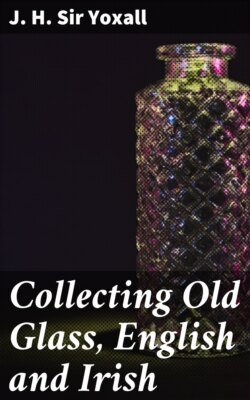Читать книгу Collecting Old Glass, English and Irish - J. H. Sir Yoxall - Страница 11
На сайте Литреса книга снята с продажи.
THE COLLECTOR’S RANGE
ОглавлениеTable of Contents
MASONIC ENGRAVED GOBLET, WITH CUT STEM; THE GROOVES OF THE CUTTING ENCROACHING ON THE BOWL
The beginner should recognize from the first that the range of the collector of old glass is not yet defined; that the practical hints and rules given in this book may be applied to any piece of glass, and should be, no matter how unusual its form or inexplicable now its use in its time. During the next few years things which now seem oddities, because they are so unusual, may become particularly sought after, and valued because they are rare. I therefore advise the beginner to be a general and diffusing collector, leaving no genuine old piece unsnapped-up which comes within his reach and means. At present cut Waterford glass and spiral-stemmed blown wine glasses are the things most sought after by glass collectors, but they may not be so a few years hence. I do not mean that they will ever drop in selling value now, but I anticipate that the selling value of other glass articles, rather neglected now, may appreciate; that is why I recommend the practice of general and diffusive collecting and a wide range. But if a collector prefers to specialize, he may set out to collect wine glasses only, or inscribed glasses only, or what-not in that way; he may go in for cut-glass only, or blown glass only, or coloured glass only, or toys and eccentricities only; he may choose geographically, collecting Irish glass only, or English glass only, or Bristol glass only, and so forth. In any case his range will be limited by certain dates; he will very seldom come upon a piece so old as the reign of Charles II, and he will not care to collect glassware made so late as the year in which Victoria came to the throne. With Venice-made glass this book has nothing to do. Much old Dutch-made glass exists in England, but the student of this book will be enabled to detect it, and not unintentionally to acquire it believing it to be English made. Bohemian-made glass, cut and coloured, is seldom taken up by collectors here. The range in these islands is for English and Irish glass, for it is the ware most readily collectable, most likely to increase in value, and to be most readily sold when a collection comes to be dispersed; I mention this latter consideration because any collector not wealthy must, in justice to his heirs and dependents, in this matter “look to the end.”
